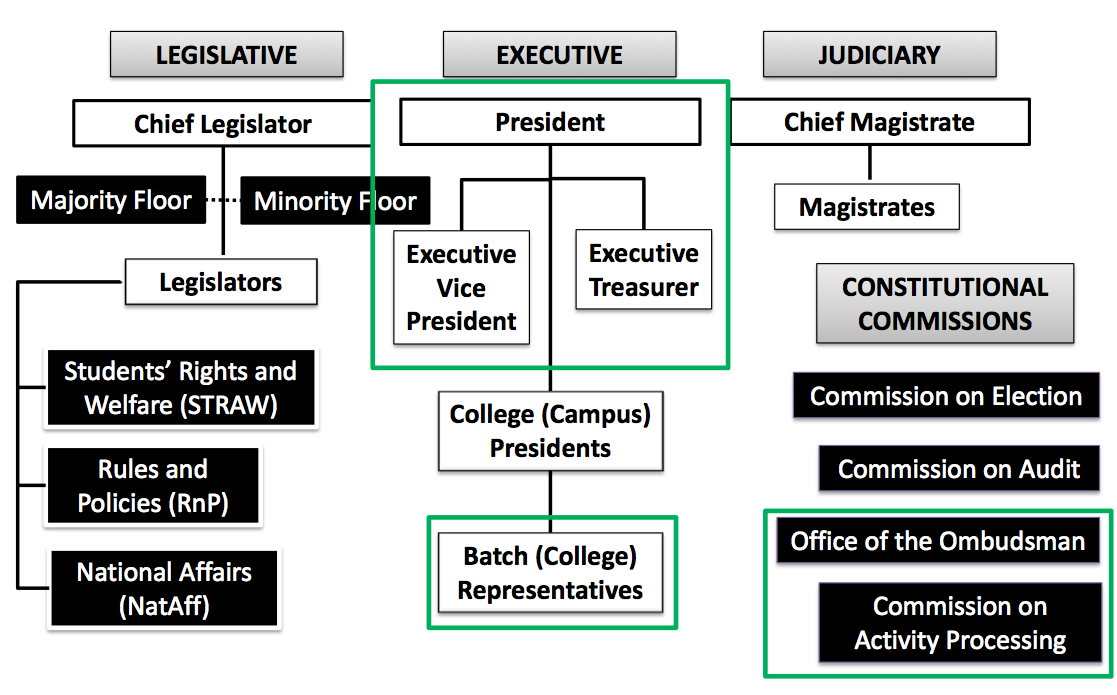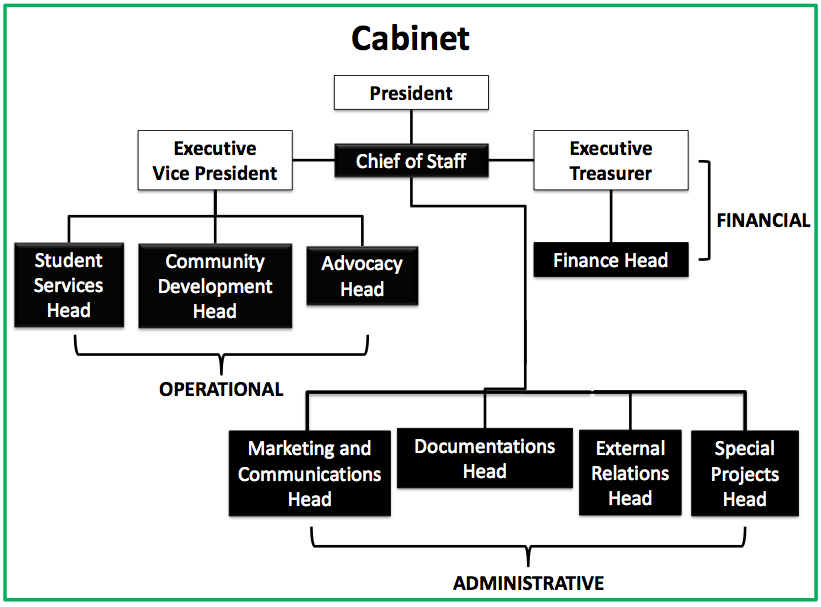The Legislative Assembly (LA) convened for its first session of the term today, January 10, with most of the period dedicated to the discussion of legislative and executive structural reforms in the form of amendments to the University Student Government (USG) Constitution, in line with the USG’s Operation REFOCUS.
The session started with a discussion on the advocacy of the LA in improving evacuation protocol awareness in the University. Matthew Yabut, FAST2013 Legislative Assembly Representative and the main proponent of the “Resolution Calling for Intensified Evacuation Campaign”, called attention to improved USG presence in the University Safety Council, and presented the results of his batch’s research on evacuation protocols.
“Basically there’s nothing formal or informal that can actually educate the students about [the University’s] evacuation procedures,” Yabut explained. He backed this statement by showing results of a survey conducted the past two terms, which aimed to gauge freshmen students’ knowledge about evacuation procedures in the University. However, the survey results were criticized because the survey only had a turnout of 296 respondents, a majority of which was comprised of ID113 students from the College of Liberal Arts. For survey results to be considered legitimate by the LA, they must have a turnout of at least 400 respondents in a college with a big population like CLA, rendering the results of this particular survey partial and unofficial.
The resolution was laid on the table on grounds of lack of research regarding the framework of the matter. As suggested, the survey which was originally given to FAST2013 students will be disseminated to other students to encompass a broader number of colleges and batches.
Having lain matters on the table during the last session held towards the end of the second term, the LA reopened discussion regarding the proposed amendments to the USG Constitution. The session today deliberated on the continuation of Article V: The Legislative Branch and the opening sections of Article VI: The Executive Branch.
As the agenda was opened, Minority floor leader Vani Altomonte questioned the legality and impartiality of having members of the Judiciary branch as co-authors of LA resolutions. Gregg Tolentino, Excel 2013 LA Rep and one of the main proponents, stated that because the Judiciary is one of the branches of the USG permitted to initiate campaigns, its move to act as a consultant for the proposed amendments is allowable. The proponents also made it clear that the Judiciary was asked only informally and that listing its members as co-authorship was only a matter of technicality and could easily be changed if need be. Altomonte, however, pledged to bring up notes in the minutes of the previous session to prove that the Judiciary’s involvement was beyond mere consultancy.
Arguments were raised regarding the appointment of a temporary chief legislator to preside over LA sessions in cases of absence of the chief legislator. Also brought up was the LA Secretariat, which is composed of a head (the Secretary General) and officers exclusively responsible for following up the uploading of minutes and resolutions online. Section 10 of the same article, titled Resolutions, was also brought to light when establishing a promulgation period for approved resolutions was suggested. During this time, which can last from two to three working days, the public is given information regarding the resolution and its bearings, while the President may opt to veto the resolution if necessary. Arguments questioning the necessity of having a USG President “approve” resolutions, and the possible political repercussions of vetoing resolutions, in addition to counter-arguments justifying the time needed for the USG’s Executive Committee to mull over resolutions and their impact, were also raised during the session.
The rest of the discussion on Article V went by smoothly with little to no changes made in the remaining sections. Discussions on Article VI: The Executive Branch elicited more debate and arguments within the floor.
Because the amendments to the constitution ask for abolition of several offices under the Executive Board (EB), the motive for the hierarchical restructuring was also questioned by the floor. Proponents of the resolution explained that there was an overlap in terms of responsibilities of the President and other members of the EB. To address this problem, the proponents removed offices such as the Office of the Vice President for External Affairs (OVPEA) as well as the Office for the Vice President for Internal Affairs (OVPIA). The duties of both the VP-Externals and VP-Internals, in accordance the the proposed amendments, are suggested to be handed over to the President and Executive Vice President, respectively.
The proposed structure of the USG in the constitutional amendments.
USG President Migi Moreno was called to speak on the floor to clarify the EB hierarchy chart during the session. In line with the changes made to the EB is the creation of a Cabinet, composed of the Chief of Staff and several heads for Documentations, Marketing and Communications, External Relations, Special Projects, and Finance, as well as Executive Department Chairpersons. However, the proposed constitution allows for the creation of ad hoc committees under the Cabinet by the EB. The Cabinet is entrusted with the administrative, operational and financial affairs of the EB.
The structure of the proposed Cabinet
Another point of interest was section 3.3 of the same article, which states that the EB has the power, duty, and responsibility to “determine the vision, goals and objectives for the USG for the academic year and ensure that resources be made available towards their attainment.” Binky Suarez of the 68th ENG questioned why it was only a function of the EB when the goals to be set were for the USG as a whole. It was noted that equal power should be given to the other two branches to ensure checks and balances.
Due to some proponents having to leave the session, the LA had to again lay the matter on the table. Discussions will be reopened on the next LA session to be held next week, 2:40 pm. The LA still has to deliberate on eleven more articles before finishing their rounds on the proposed constitutional amendments, in addition to the continuation of Article VI.
Proponent Gregg Tolentino is hopeful for the conclusion of the interpellations. “[I expect] that in two sessions, we will have a vote [on this resolution],” he shares.
CATCH2T17 Representative Patrick Kahn, on the other hand, states, “I can’t say that the Constitution will be approved before January ends,” pertaining to Moreno’s target date of holding a plebiscite by the end of the month.
The LaSallian will be pursuing this story as it continues. Discussions on the amendments will be ongoing for the remaining LA sessions of the 3rd term. Students may consult with their batch LA on the developments of the plebiscite, or sit in during the LA sessions held every Friday at 2:30 pm.
The soft copies of documents pertinent to the plebiscite can be accessed through these links:
Resolution Calling for the Approval of the Amendments to the 2009 University Student Government
Appendix B1 – 2004 USG Constitution (original proposal)
Appendix B2 – 2009 USG Constitution (ratified and with supplementary guidelines)
Appendix B3 – 2013 USG Constitution (unratified with DLSU-STC Government Article)
Appendix D – 2014 USG Constitution (with proposed amendments)
Appendix F – Table of Proposed Amendments in the 2014 USG Constitution
Appendix H – Operation REFOCUS (USG AY 2013-2014)



4 replies on “LA discusses proposed legislative, executive structure reforms”
.
thank you!!
.
thanks for information.
.
ñïàñèáî çà èíôó!
.
ñïñ!